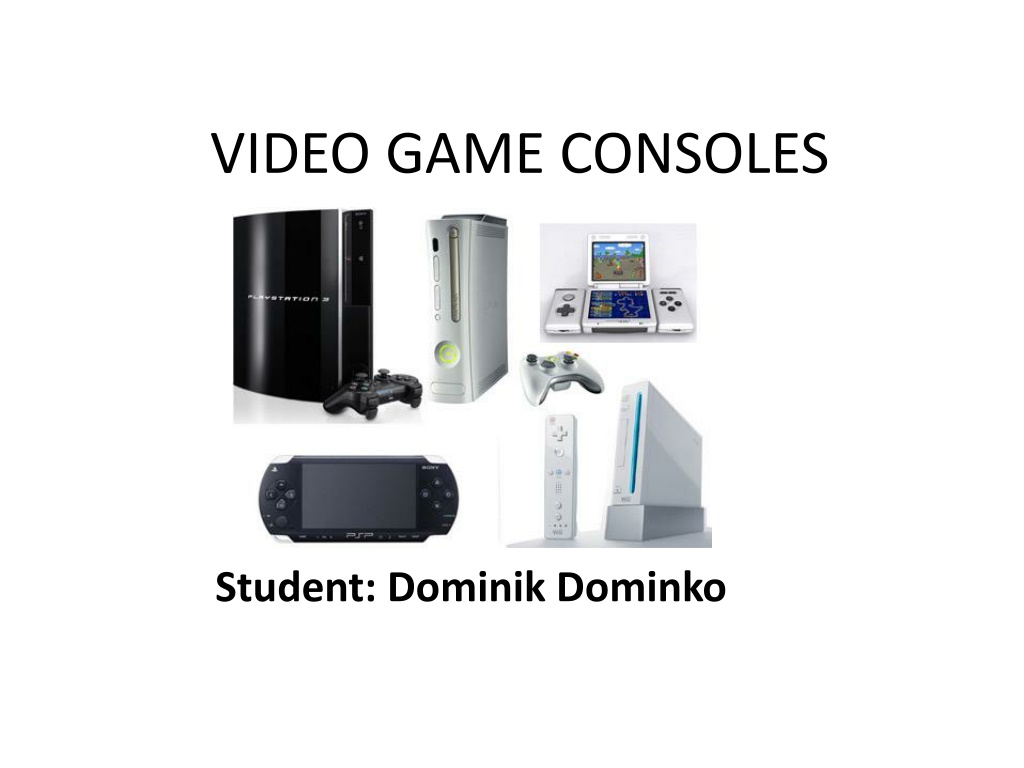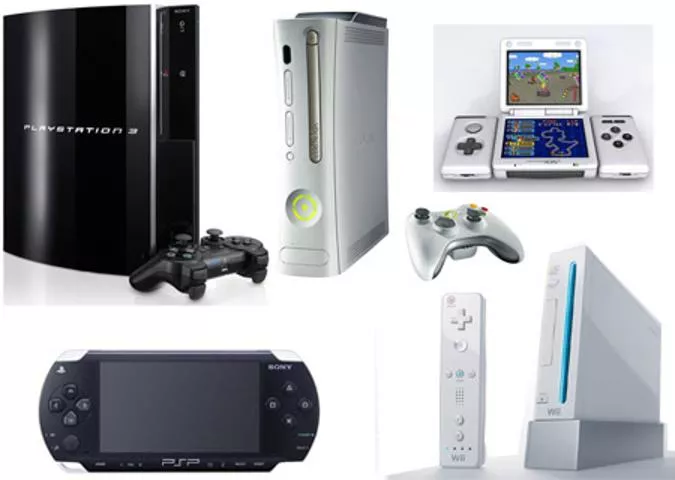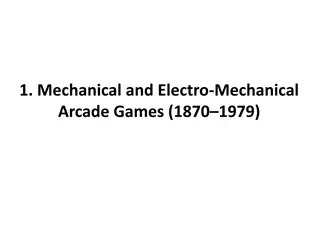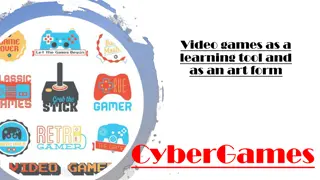Evolution of Video Game Consoles: A Historical Journey
Explore the evolution of video game consoles from the first generation with Ralph H. Baer's concept to the success of Magnavox Odyssey, Atari 2600, and Nintendo Entertainment System in the third generation. Witness the advancements in technology and gaming experience that shaped the gaming industry we know today.
Download Presentation

Please find below an Image/Link to download the presentation.
The content on the website is provided AS IS for your information and personal use only. It may not be sold, licensed, or shared on other websites without obtaining consent from the author.If you encounter any issues during the download, it is possible that the publisher has removed the file from their server.
You are allowed to download the files provided on this website for personal or commercial use, subject to the condition that they are used lawfully. All files are the property of their respective owners.
The content on the website is provided AS IS for your information and personal use only. It may not be sold, licensed, or shared on other websites without obtaining consent from the author.
E N D
Presentation Transcript
VIDEO GAME CONSOLES Student: Dominik Dominko
First generation Although the first video games appeared in the 1950s, they were played on vector displays connected to massive computers, not analog televisions. Ralph H. Baer conceived the idea of a home video game in 1951.
Magnavox Odyssey Finally, in 1972 Magnavox released the Magnavox Odyssey, the first home video game console which could be connected to a TV set.
Ralph Baer's initial design had called for a huge row of switches that would allow gamers to turn on and off certain components of the console (the Odyssey lacked a cpu) to create slightly different games like tennis, volleyball, hockey, and chase.
The Odyssey was initially only moderately successful, and it was not until Atari's arcade game Pong popularized video games, that the public began to take more notice of the emerging industry
Second generation Fairchild released the Fairchild Video Entertainment System (VES) in 1976.
The VES was the first to contain a programmable microprocessor so its cartridges only needed a single ROM chip to store microprocessor instructions. RCA and Atari soon released their own cartridge-based consoles.
The ATARI 2600, the most popular console of the second generation
Third generation In 1983, Nintendo released the Family Computer (or Famicom) in Japan. The Famicom supported high-resolution backgrounds and with more colors than anyone on the market. This allowed Famicom games to be longer and have more detailed graphics. Nintendo brought their Famicom to the U.S. in the form of the Nintendo Entertainment System (NES)
Fourth generation Sega gained market share by releasing its next-generation console, the Mega Drive in 1988, two years before Nintendo released the Super Nintendo Entertainment System (SNES) While initially sales of the next generation console were slow, Sega found its own must-have hit in Sonic the Hedgehog. Similar to Space Invaders for the Atari, sales spiked after its release.
Fifth generation The first fifth-generation consoles were the 3DO and the Atari Jaguar. Both of these systems were much more powerful than the Super Nintendo Entertainment System (SNES) or Mega Drive. Neither of these consoles were serious threats to Sega or Nintendo, though.
Sony's PlayStation was released in Japan on December 3, 1994. The PlayStation spawned a whole lineup of consoles from generation to generation and has earned Sony great respect as a video game company, becoming the first video game system to sell over 100 million consoles. Sony also released a redesigned, smaller version of the PlayStation entitled the 'PSone' on July 7, 2000.
Sixth generation The sixth generation saw a move towards PC-like architectures in gaming consoles, as well as a shift towards using DVDs for game media. This brought games that were both longer and more visually appealing. Furthermore, this generation also saw experimentation with online console gaming and implementing both flash and hard drive storage for game data.
Seventh generation The features introduced in this generation include the support of new disc formats: Blu- ray Disc, utilized by the PlayStation 3, and HD DVD supported by the Xbox 360.


























